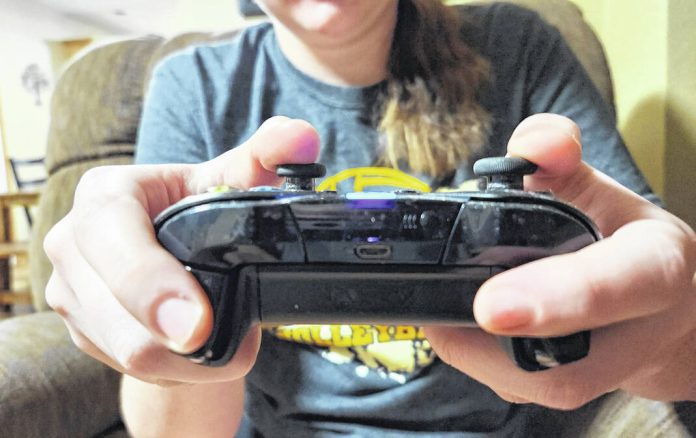LIMA — Sometimes a game is not only a game, especially when that game is online.
Online gaming is often a means of escape, allowing the game player to unwind after a day at work or school, and statistics have shown that these games have grown immensely in popularity, especially among young people. According to a 2018 report from the Pew Research Center, 90 percent of 13 to 17-year-olds surveyed responded that they play video games on a computer, game console or cell phone, with 97 percent of teenage boys surveyed and 83 percent of teenage girls surveyed saying they take part.
While games like Minecraft, Roblox, Call of Duty or Fortnite offer hours of gameplay and entertainment, many such games also include interactive features that allow gamers to interact with other gamers throughout the world through real-time audio chat or text. For Officer Nate Garlock, the director of safety and security at Lima schools, this connection represents both a potential blessing and a potential curse.
“Some of the biggest dangers is also the biggest advantage with a lot of these things, which is that instant connection with people from all over the world with different cultures and backgrounds,” he said. “But there are also bad people out there who can use that against you.”
What are the dangers?
A 2021 public service announcement from the FBI outlined how seemingly innocuous conversations on gaming platforms can often lead to young people being put in danger or subjected to sexual exploitation as they are coerced into sending explicit photos to a predator. The PSA describes how the exploitation can escalate as predators blackmail young people with sharing their photos publicly unless they send more explicit content.
Other dangers could include the young person being convinced to leave the home, as was the case in December for an American Township teenager who was transported to Florida after connecting with someone through an online video game.
“It’s one of the biggest concerns now because there are new ways coming out every day for people to get around parents and the guards that they put up,” Kelly Salerno, a social worker at Allen East schools, said. “I think a lot of parents don’t even realize with online gaming what kind of world it can open up for them. I hear from several students that they have a lot of gaming friends online from different states, and that could be anybody.”
Steps parents can take
With the exploitation of young gamers taking place behind a computer or television screen, it can be extremely difficult for parents to spot any warning signs, which is why monitoring online activity closely is so important, according to Salerno.
“So for parents, it’s so important for them to be constantly reading, researching and monitoring everything that they’re doing, looking for anything that’s unusual like in their texting,” she said.
Wapakoneta Police Officer Adam Baker, the school resource officer at Wapakoneta High School, also pointed out that many cell phone services have apps and other services to help parents monitor their children’s activity.
“You can get safety checks to where they are not just getting random messages [from strangers] or on social media,” he said. “You can monitor everything and know where they are at all times.”
Garlock also suggested getting to know the games that are being played so that unusual activity can be spotted more quickly.
“It’s important that we, as adults, spend some time understanding these platforms and these games,” he said. “When we played Nintendo and Super Nintendo or PlayStation before everything was connected online, you turned it on, you played your game and that’s where you were. Now there are all these different back doors and avenues that you can go down to where people are even setting up a game within a game.”
The Ohio School Safety Center also lists different cyber safety strategies on its website, including talking with children about what red flags to look for themselves like requests to share personal information, photos or videos.







